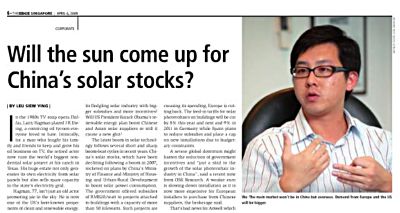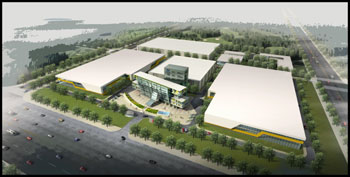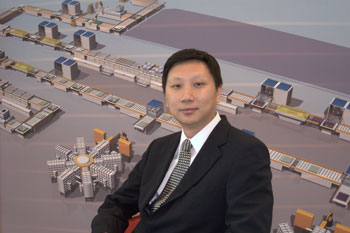 The Edge article in which Ken Wu (pictured) of Anwell was interviewed.
The Edge article in which Ken Wu (pictured) of Anwell was interviewed.
The Edge Singapore (Apr 6-12 edition) ran an excellent article on the solar business, noting that US-listed Chinese solar stocks have posted hefty gains.
A catalyst was the Chinese government offering subsidies of RMB20/watt to projects attached to buildings with a capacity of more than 50 kilowatts.
China has about 20 solar panel makers including US-listed players like Sun-tech Power and Yingli Green Energy (in which Temasek owns a 5.2% stake). Singapore mainboard-listed Anwell Technologies is a new player in the market.
The Edge Singapore said that analysts considered the China solar rally to be way overdone because it is still unclear how, when and which of the companies would benefit from the subsidies.
Nomura International said: “We believe 2009 will be a transition period for the solar photo-voltaic industry, with softening demand, due to global credit tightening and polysilicon oversupply, due to producers’ expansion and weak semiconductor sentiment,” it said in a March 27 research note.
A severe global downturn might hasten the reduction of government incentives and “put a skid to the growth of the solar photovoltaic industry in China”, said a recent note from OSK Research.
A weaker euro is slowing down installation as it is now more expensive for European installers to purchase from Chinese suppliers, the brokerage said.

That’s bad news for Anwell which expects to roll out its first thin-film solar modules in June but chief financial officer Ken Wu is putting a positive spin on its prospects. “We are unique because we manufacture panels and equipment,” he told The Edge Singapore.
Being able to get into the industry at this juncture when lack of funding has caused others to abandon their plans will strengthen its position, he says.
Anwell chose thin film rather than crystalline technology, Wu says, because of the growth potential of the new standard and the synergies with its core business.
Anwell designs and manufactures optical disc equipment and equipment for making flat dis-play panels. It is using the same optical disc coating technology on silicon wafers.
Anwell aims to be one of the top 10 thin-film module producers in the world, with capacity targetted to rise to 120MW per year by 2010. Its initial capacity is 40MW.

Demand from US and Europe
Anwell’s Wu is aware of limited Chinese demand. “The main market won’t be in China but overseas. Demand from Europe and the US will be bigger. We expect to export more in the first two years,” he says.
One of its first customers is Brazil Energy, which has made an initial purchase of thin-film panels with a total capacity of 4 MW per year to be delivered in 2H2009.
Another concern is the pressure on the selling prices of crystalline photovoltaics. Dumping of solar polysilicon to ease cash flow and excess inventory reduction resulted in oversupply at end-November last year and drove prices to as low as US$130 per kg from a peak of US$500 in 2Q2008.
Anwell, which reported sales rising 35.2% to HK$905.4 million ($175.82 million) and a loss of HK$101.1 million for FY2008, is trading at 1.3 times for-ward earnings while Solargiga is trading at 8.5 times.
NRA Capital, which has a “hold” rating on Anwell, says in a Feb 25 research note that the company incurred start up losses from its solar power venture in FY2008. Anwell, however, is strongly supported by the Chinese government — it received HK$275 million in subsidies for R&D last year.
“We believe Anwell will be able to get through the global crisis with the continued support of the Chinese government,” it says. Nevertheless, NRA maintains its rating, saying the execution risks from the solar business is still high.
Recent story: 3 Ace CEOs (from Anwell, Hi-P and Design Studio)







